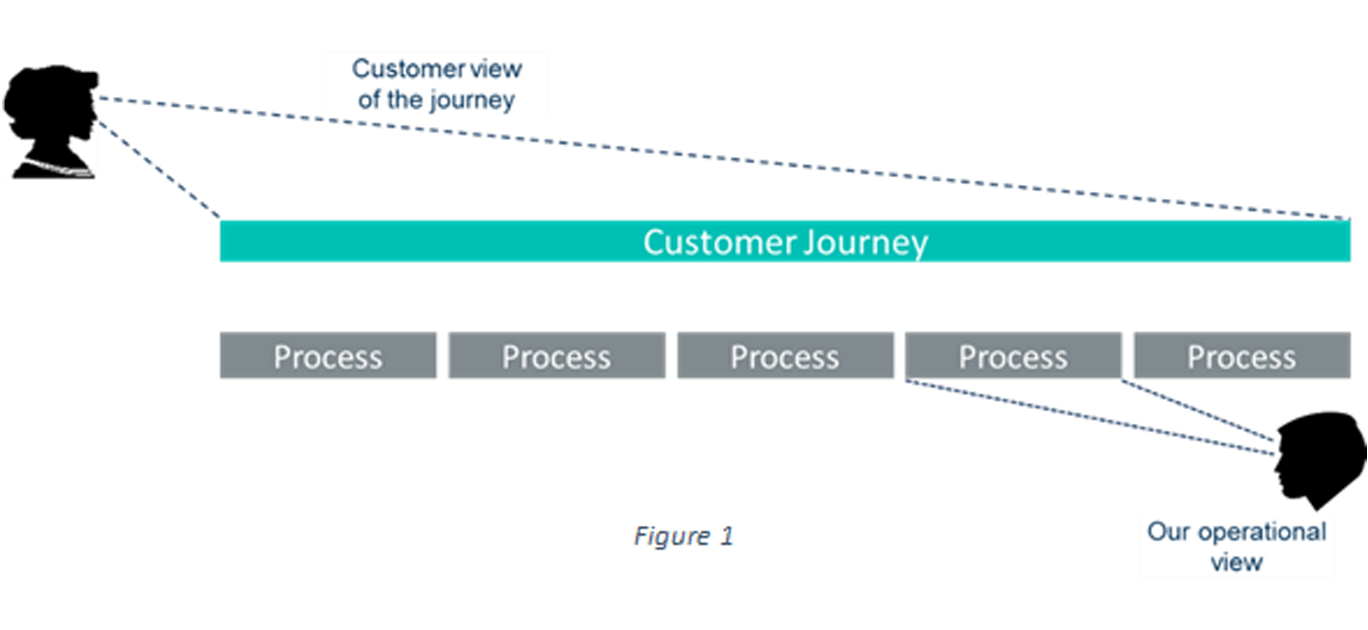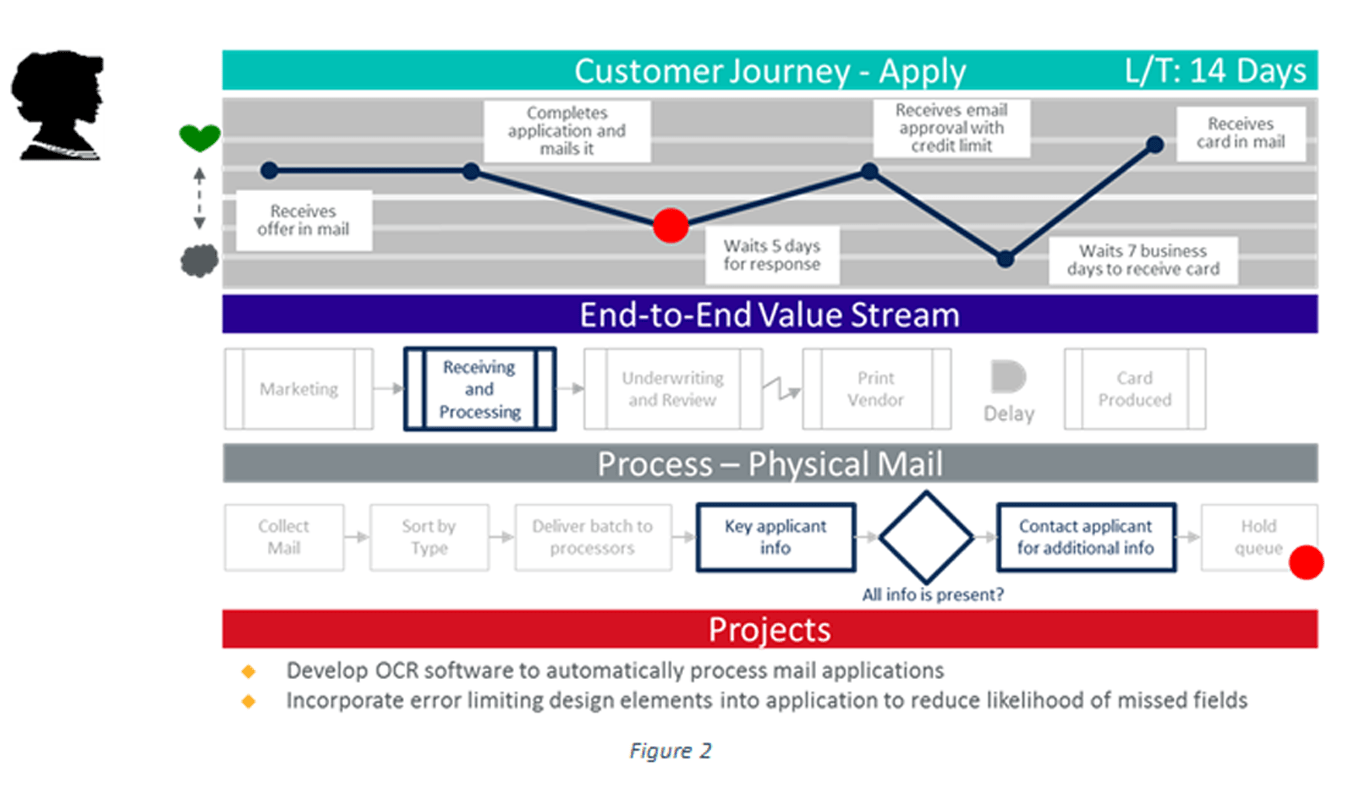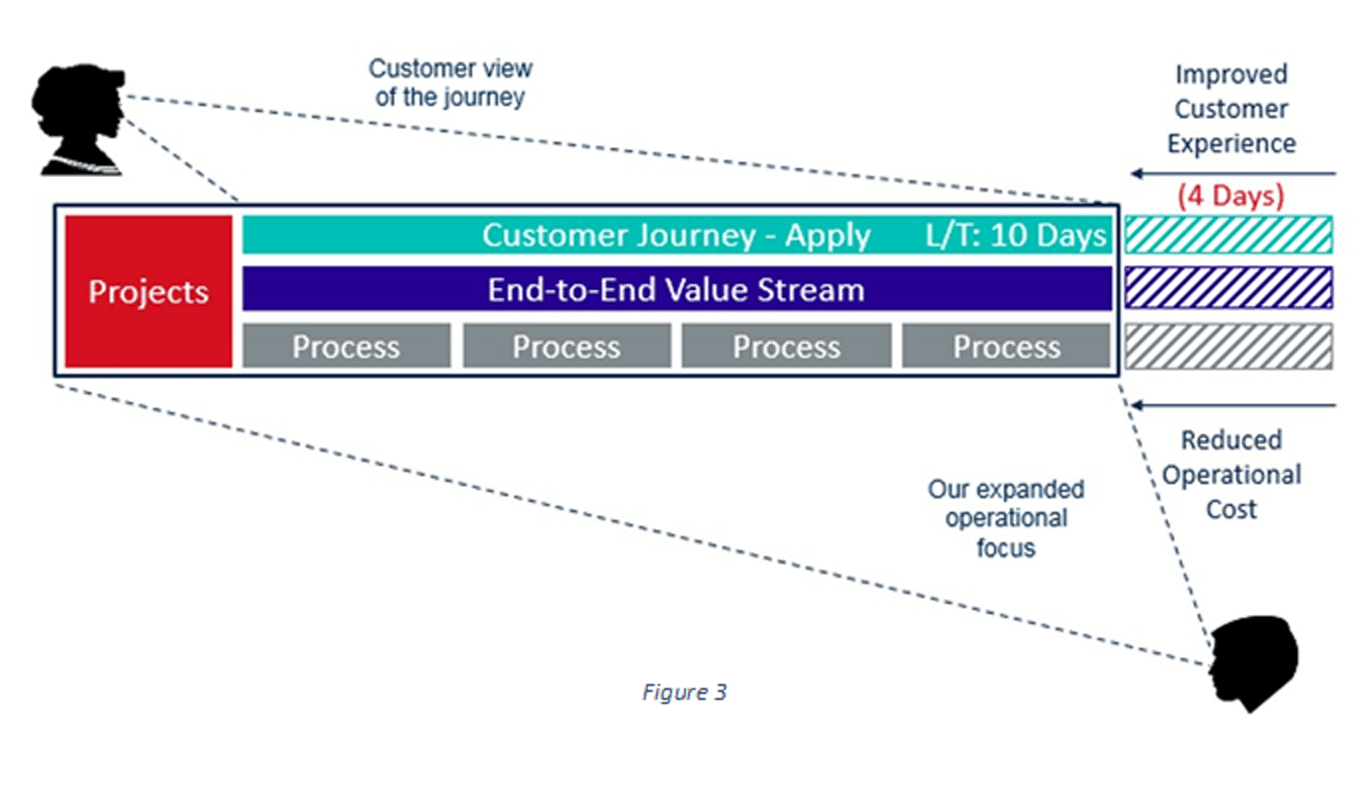
Archive | InBrief
1 + 1 = 4: Pairing lean and customer experience tools to double your impact
1 + 1 = 4: Pairing lean and customer experience tools to double your impact
The term ‘evolution’ can be defined as the gradual development of something from a simple, to more complex form.
This concept is especially true when applied to business management and strategy. Just as a snake sheds its skin to allow for continued growth, companies often shed their tools, paradigms, and methodologies in an effort to grow into faster, more agile organizations. The evolution of business strategy has shifted focus away from very tangible items (process redesign, workflows, new software and hardware) to very abstract ways of thinking (predictive logic, customer emotions, competitor analysis). We’ve seen organizations transition from striving to optimize the performance of their technology, processes and people, to a new focus on optimizing customer engagement.
Typically, it is the marketing group’s role to look outward at their prospects and customers; accomplished by listening to consumers, developing and producing offerings, and implementing marketing campaigns. Inversely, the operations team sits alongside marketing and looks inward at the organization. One is determined to grow their footprint, the other trying to reduce it. When these two business functions compete for the same strategic investment money to achieve opposing goals, the group that suffers is the customer.
As organizations continue to evolve their business strategy, a number are making this leap to a customer-centric focus with the goal being to understand and respond to the customers’ opinions, frustrations, or delights when interacting with the brand.
The issue with moving to a customer-centric strategy model, however, is that it often disconnects the organization.
Customer Experience Transformation Requires Process Change
Traditional CX projects often show little consideration for the operational impacts the solution will have. As customer experience groups have started to reverse their thinking and look inward at the organization from the customers’ eyes, the solutions often stop short of crossing the customer-company interaction barrier. Likewise, operations groups are still also primarily looking inward and process re-engineering may not fully understand or worse, not even consider the implications to the customer. Similar to CX, it is vital to help OpEx groups to flip their mindset as well and stress the importance of crossing the same interaction barrier with their projects.
Recently, we at West Monroe embarked on a project with a global credit card issuer to change this paradigm by connecting the two groups. We are helping the organization develop a strategy that prioritizes investment only in projects that impact both customer and process alike. By pairing Customer Journey Mapping tools with Lean Process methodologies, we are able to create invaluable links between problem and solution.
As shown in Figure 2, we can approach a common situation, such as applying for a new credit card, with the blended framework. We tie Lean principles to Customer Journey Maps to link customer emotions down to root causes. Where each methodology used independently can still deliver results, we are ensuring that strategic investments are prioritized to those ideas and projects that both improve customer sentiment and drive down cost.
In Lean, “value” is defined as something the customer is willing to pay for, so who better to help optimize a process than the customer themselves. Our blended methodology is turning the boardroom from a competitive investment landscape into a collaborative one. Why choose between increasing revenue and decreasing cost when you can have both?

